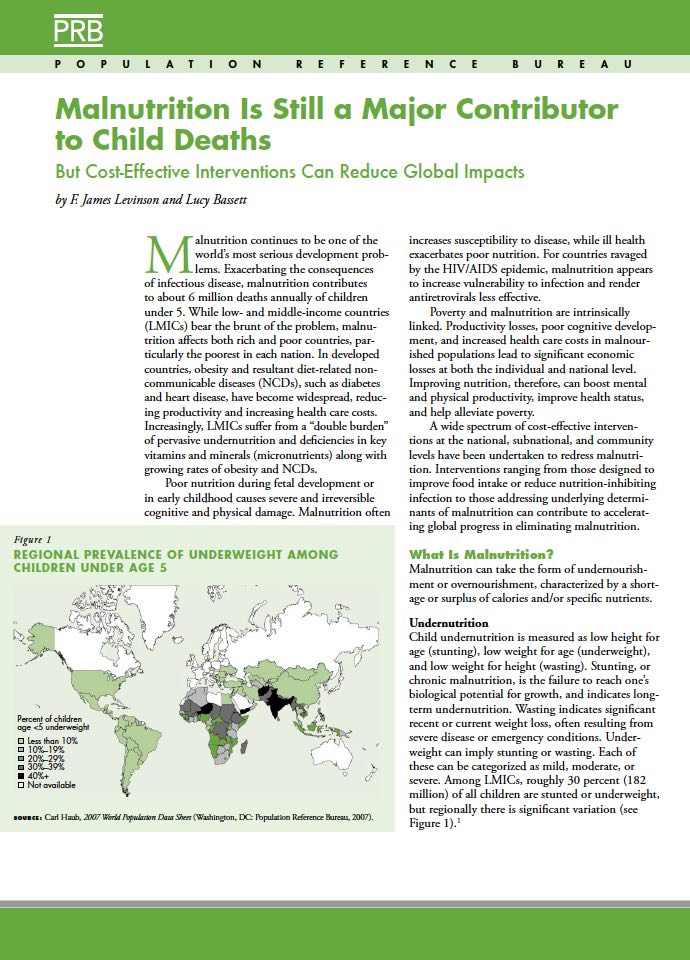
Malnutrition Is Still a Major Contributor to Child Deaths
Date
August 16, 2007
Author
Focus Areas
(2007) Malnutrition continues to be one of the world’s most serious development problems. Exacerbating the consequences of infectious disease, malnutrition contributes to about 6 million deaths annually of children under 5. While low- and middle-income countries (LMICs) bear the brunt of the problem, malnutrition affects both rich and poor countries, particularly the poorest in each nation. In developed countries, obesity and resultant diet-related noncommunicable diseases (NCDs), such as diabetes and heart disease, have become widespread, reducing productivity and increasing health care costs.
Increasingly, LMICs suffer from a “double burden” of pervasive undernutrition and deficiencies in key vitamins and minerals (micronutrients) along with growing rates of obesity and NCDs. Poor nutrition during fetal development or in early childhood causes severe and irreversible cognitive and physical damage. Malnutrition often increases susceptibility to disease, while ill health exacerbates poor nutrition. For countries ravaged by the HIV/AIDS epidemic, malnutrition appears to increase vulnerability to infection and render antiretrovirals less effective.
Poverty and malnutrition are intrinsically linked. Productivity losses, poor cognitive development, and increased health care costs in malnourished populations lead to significant economic losses at both the individual and national level. Improving nutrition, therefore, can boost mental and physical productivity, improve health status, and help alleviate poverty.
A wide spectrum of cost-effective interventions at the national, subnational, and community levels have been undertaken to redress malnutrition. Interventions ranging from those designed to improve food intake or reduce nutrition-inhibiting infection to those addressing underlying determinants of malnutrition can contribute to accelerating global progress in eliminating malnutrition.

 ">
">